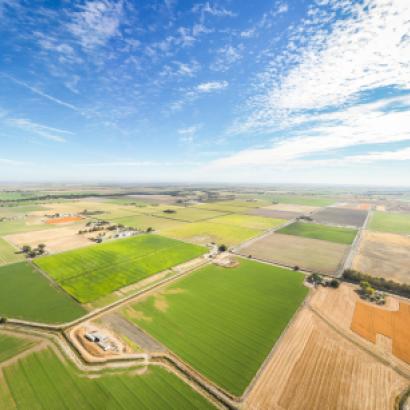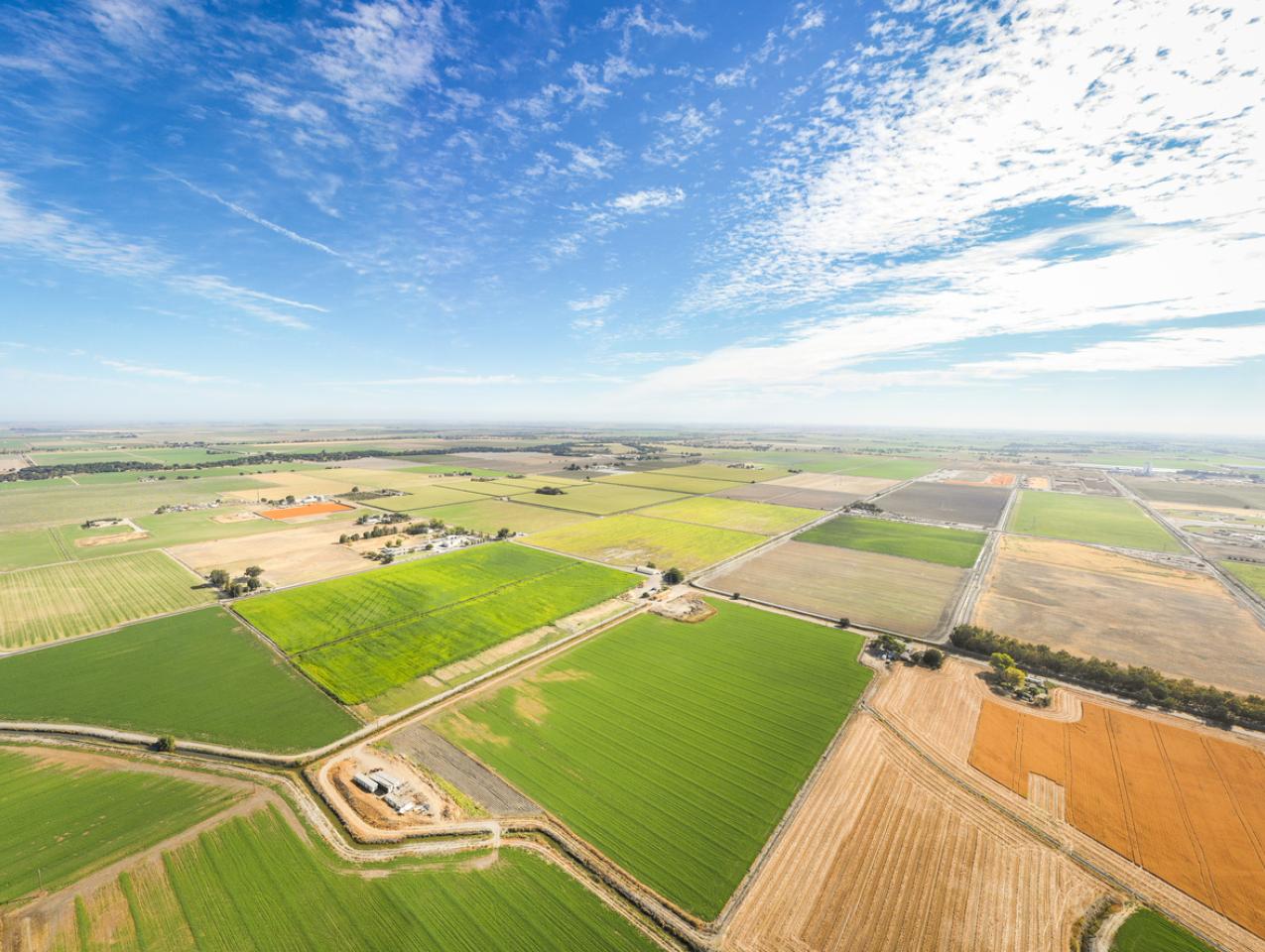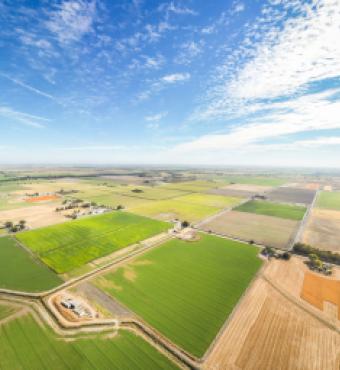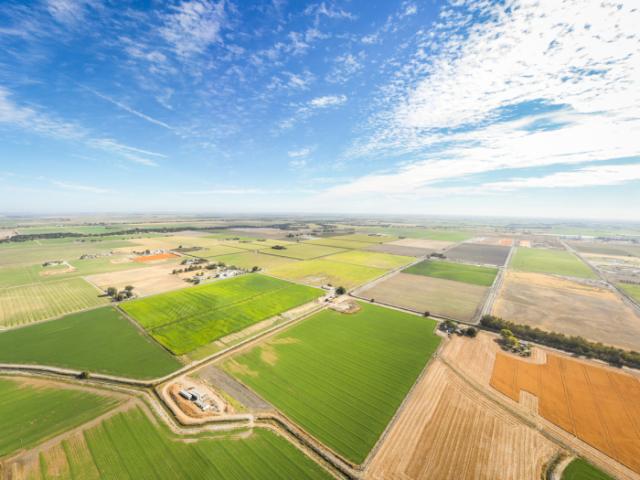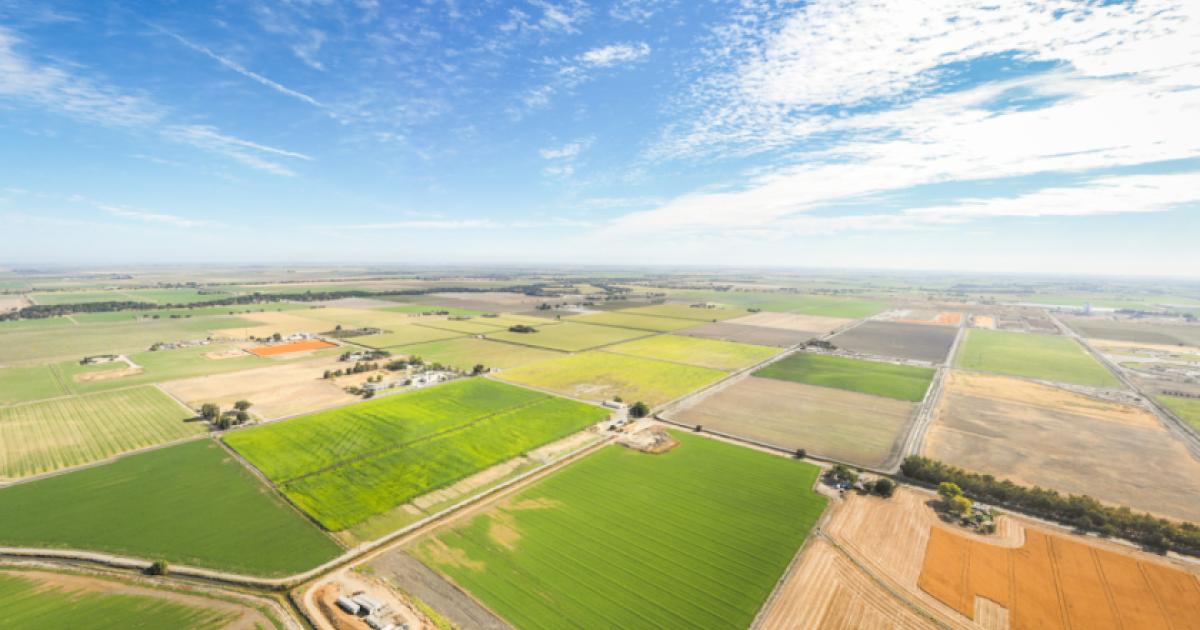This essay is based on the working paper “The Impact of Commercial Real Estate Regulations on U.S. Output” by Fil Babalievsky, Kyle F. Herkenhoff, Lee E. Ohanian, and Edward C. Prescott.
Many of the most important venture capital firms in the United States are located on Sand Hill Road in Menlo Park, California. These firms have helped grow many new and emerging technology companies that would go on to contribute to the transformation of the global economy, including Microsoft, Apple, Google, Amazon, and Spotify. However, at the end of Sand Hill Road, just a stone’s throw from these remarkably important venture capital firms is farmland where cows graze. What are cows doing on perhaps the most valuable commercial land in the United States? The cows are there because of regulations that prevent that land from being used for other commercial purposes.
Sand Hill Road is perhaps the most striking example of how land-use regulations affect US economic activity. In the case of Sand Hill Road, zoning stipulates the type of economic activity that can take place on a parcel of land. Zoning also regulates the size of commercial buildings on that land. Most venture capital firms on Sand Hill Road cannot be taller than two stories.
Zoning is the most common land-use regulation in the United States, affecting the scale and scope of commercial economic activity. Other regulations include environmental restrictions, which can significantly affect commercial projects through costly environmental impact reviews and the threat (and use) of environmental lawsuits to limit (or deny) development. Further complications arise when community groups influence development by exerting political pressure on state and local politicians.
Economists and policymakers have been actively studying the outcomes of these regulations on economic activity and consumer welfare in recent years. Progress has been made in quantifying the impact of residential land-use regulations that limit the amount of housing that can be built on a parcel of land. However, the effect of land-use regulations on commercial buildings are virtually unstudied.
The major challenge in analyzing regulatory impact is that commercial activity in some cities is subject to dozens, even hundreds, of regulations. Moreover, it is virtually impossible to quantify these regulations because zoning codebooks are frequently out of date, some buildings are exempted from regulations, and unofficial “shadow regulations” also affect outcomes, such as the threat of a lawsuit by an environmental group that is withdrawn if a developer agrees to build on a smaller scale than planned. Finally, the arbitrary nature of some regulations’ boundaries can cause further computational complications; regulations may differ between buildings that are across the street from each other or that even share a common wall.
In our paper “The Impact of Commercial Real Estate Regulations on U.S. Output,” my coauthors, Fil Babalievsky and Kyle Herkenhoff, and I develop an economic modeling framework that addresses these challenges. The key insight is that commercial buildings developed on the most valuable land—such as Sand Hill Road in Menlo Park, California, or parcels in midtown Manhattan—should be large. From society’s perspective, valuable land signifies a highly productive location, which means that society benefits from having a large building to leverage the location’s productivity. From the developer’s perspective, valuable land means a large expense, but this expense can be spread over the square footage of a large building. In the case of highly valuable land, both society and developers benefit from creating a large commercial space.
The size of a building relative to the value of a parcel of land is influenced by the stringency of the land-use regulations governing the parcel. For example, the skyscrapers in midtown and downtown Manhattan that sit on extremely valuable land indicate that commercial land-use regulations are relatively small and thus allow for building larger structures. On the other hand, the very small buildings that are home to Silicon Valley venture capital firms on the extremely valuable land on Sand Hill Road indicate very stringent land-use regulations, which deny larger buildings.
My coauthors and I use this concept to quantify the stringency of these regulations by collecting tax assessment data from most commercial building parcels in the United States. Our approach requires only two numbers: the assessor’s total valuation of a parcel and the amount of that valuation accounted for by just the structure that sits on the land. On Sand Hill Road, much less of the total value of a commercial parcel is accounted for by the structure, while in midtown Manhattan, much more of the total value is accounted for by the structure.
Given this simple but powerful economic logic, our analysis develops an economic model comprising the more than two hundred metropolitan statistical areas (MSAs) of the United States. The model calculates the regulation stringency at the individual parcel level, aggregates the individual parcels to the MSA level, and then aggregates each of the MSAs to the national level. The analysis finds that the least-regulated MSA is Midland, Texas, known as the “Tall City” for its towering buildings. Los Angeles and San Jose are among the most-regulated MSAs, having smaller commercial buildings that account for less of the total value of commercial parcels than the average of all MSAs. The model accounts for the positive role of land-use regulations that limit the congestion arising from completely unfettered land use in a city. Thus, the model recognizes the potential benefits of some regulations.
The analysis conducts several policy experiments that assess how real US GDP, as well as consumer welfare and developer profits, would be affected if land-use regulations were changed. One experiment analyzes what would happen if all MSAs adopted the relatively low level of land use regulation found in Midland, Texas. With this policy reform, we find that real US GDP would increase by about 3 percent in perpetuity, or about $1 trillion per year. The amount of commercial square footage would increase by around 15 percent under this scenario. Consumers would benefit from this change, as a better allocation of land use would increase their incomes, boost their consumption, and allow them to work less. The results of this experiment indicate that our present land-use regulations are far too stringent.
Commercial business developers are the only ones who would not benefit from this reform, as their profits would decline modestly. In the current regulatory environment, policies that artificially constrain commercial space allow some commercial developers to earn premium rents. This reflects the fact that the amount of commercial office space increases with policy deregulation, thereby reducing the value of commercial space on a per-square-foot basis. This finding suggests that at least some aspects of commercial regulation reflect the self-interest of those who develop commercial space rather than advancing public-minded goals, such as limiting urban congestion.
The positive effect of reducing commercial land use regulation is conservatively reported here. Our estimate of the economic impact of deregulation considers only the average level of regulation within an MSA and does not account for the varied stringency of regulations within individual MSAs. Reducing the high stringency of regulations within select regions could easily double the economic benefits of deregulating commercial buildings, leading to even higher consumer welfare, income, and production.
In conclusion, our findings suggest that deregulating commercial buildings would help businesses operate in highly productive locations, enhance consumer welfare, and broadly benefit the US economy.
Read the full paper here.
Lee Ohanian is a professor of economics at the University of California–Los Angeles and a senior fellow at the Hoover Institution.
This essay is part of the Long-Run Prosperity Research Brief Series. Research briefs highlight research that enhances our understanding of the factors that drive long-run economic growth and examine its policy implications.







